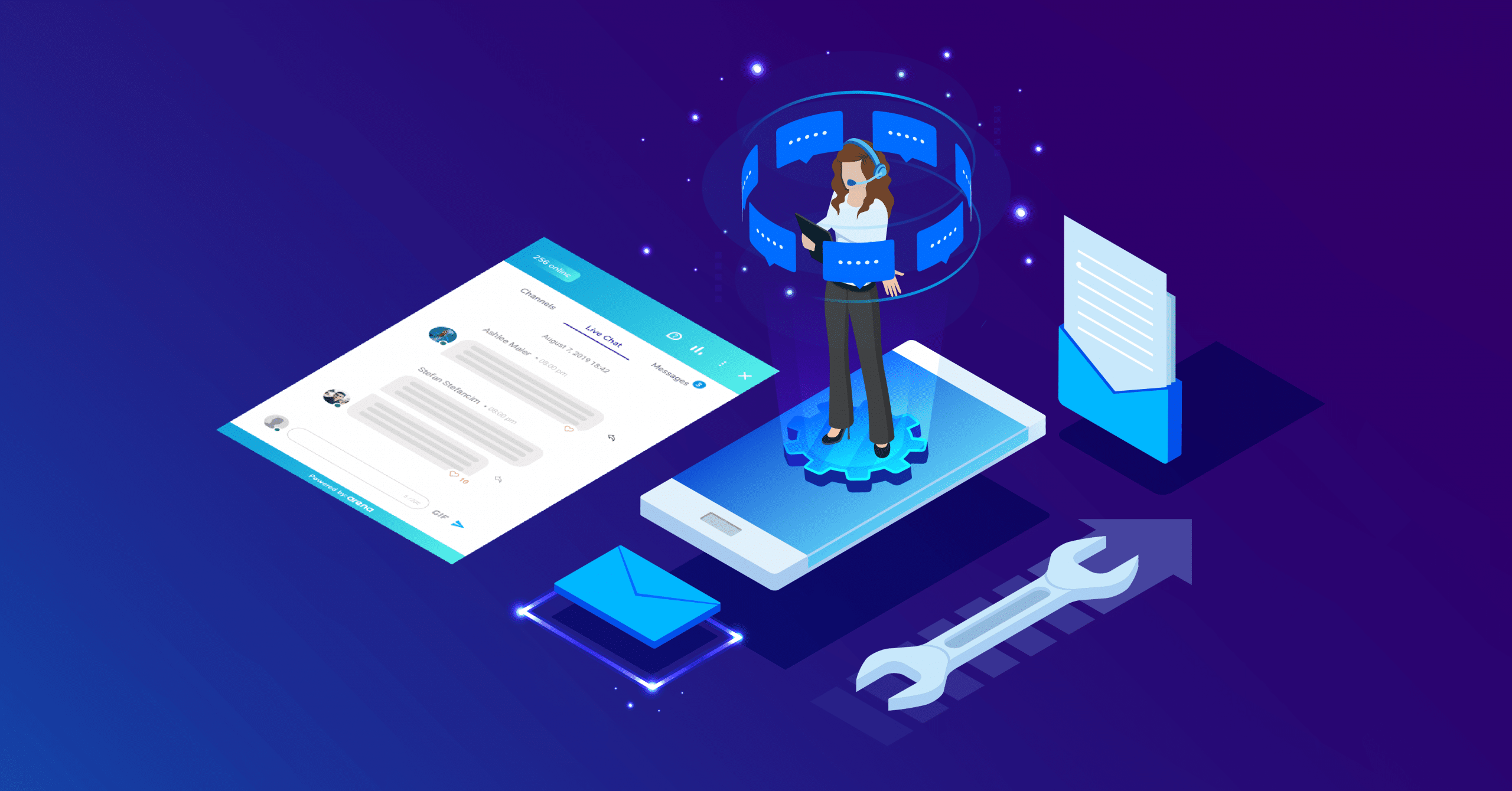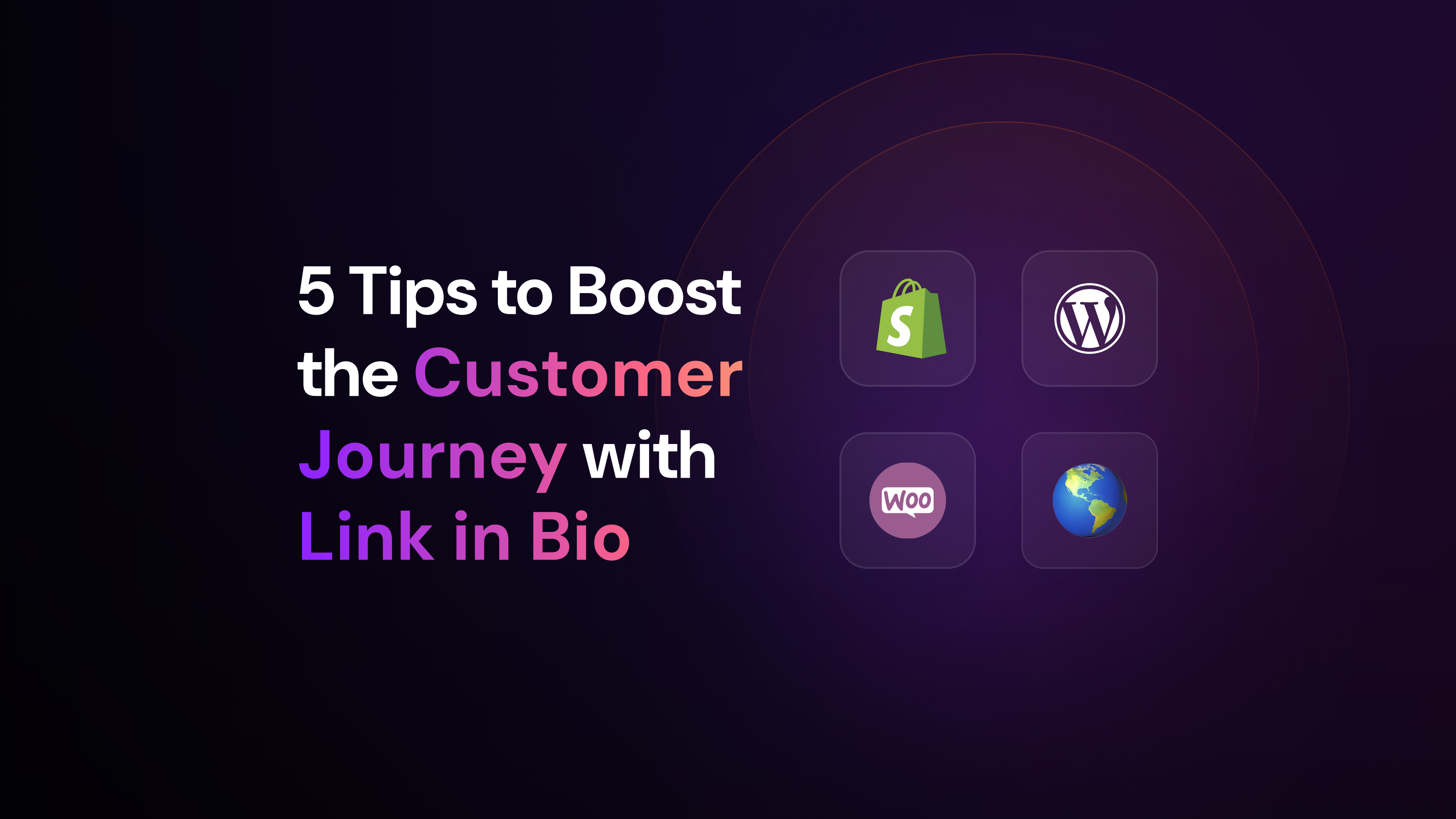Live Chat is transforming customer care across many segments. Discover how this tool is leading a “micro revolution” to customer support and sales teams.
What are the main pillars that sustain the relationship between companies and customers? Let’s think for a second about brands that are known for excellent customer experience.
Digital apps, fintech, eCommerce, you name it. No matter the segment, it’s clear that successful brands offer more than great products, advertising, and content. They have a superior approach towards customer service and always try to make sure communication is dynamic and assertive.
Live Chat is the ultimate tool to offer that. After all, in the age of instant communication, people are not willing to wait much time to have their questions answered. Besides, they increasingly want to count on omnichannel support.
Well, Live Chat is changing Customer Service in many ways. In this post, we’ll explore how this tool is boosting productivity and efficiency in Customer Service and customer satisfaction.
The Context Behind Live Chat
For those who are not familiar with Live Chat, here goes a brief description of it. Live Chat is a tool that allows customers to ask for support via instant messages directly on a company’s website or app while browsing products and viewing content.
Besides, some brands have integrated their Live Chat tools to other messaging platforms to provide a seamless support experience across different brand channels.
By why exactly is Live Chat disrupting the customer care business? According to Forrester’s study,; 33% of consumers now expect to see Live Chat services offered on every website.
The same report says the number of U.S. online shoppers who use live Chat has increased from 38% to 58% in the last five years.
Live Chat is mostly used in B2C businesses by support agents and Customer Care teams, but it can also be used by Customer Success and Sales teams in B2B companies.
Types of Live Chat Customer Service
Different types cater to different needs, making a significant impact on customer experience.
AI-Driven Chat Support
AI-driven chat support automates responses to common inquiries, freeing up human agents for complex issues. It acts as the first line of defense, handling FAQs and guiding customers through basic processes.
Human-Assisted Chat
Human-assisted chat connects customers with real agents who provide personalized support, ensuring a tailored experience that addresses unique concerns.
Hybrid Chat Solutions
Hybrid chat solutions combine AI efficiency with human empathy, offering a seamless transition from automated responses to live agents as needed.
Mobile Live Chat
Mobile live chat ensures customers can reach you anytime, anywhere, optimized for smartphones and tablets. This type of chat service is crucial for businesses targeting on-the-go consumers.
Why Live Chat can take Customer Experience to the next level
Live Chat makes communication between brands and their customers much quicker and organic as it emulates conversation platforms.
Why have the customers reaching for support through email or phone if you can help them in real-time through Live Chat? Here are a few reasons Live Chat is changing customer service in companies.
1) Enhancing brand experience
It’s no secret customers are more demanding when it comes to customer experience. They have become used to personalized messages and offers in every aspect of their lives, and thus they have high expectations regarding customer service.
According to Salesforce, 80% of customers believe brand experience is just as important as a brand’s products or services. Another study by Capgemini shows that the same percentage of customers are willing to spend more money to have better customer service.
Following this logic, customer service can be the central element to differentiate your brand from the competition.
2) Providing fast responses
A few years ago, it might have been OK to make customers wait a couple of days to get responses to their requests via phone or email. That is no longer the truth.
A study from Hubspot says 90% of customers rate “immediate response” as very important when they have a query.
Having Live Chat on your website or app gives you the ability to answer queries in real-time. In addition, Live Chat has proven to provide higher customer satisfaction rates than channels such as phone, email, and social media.
3) Decreasing resolution time
From a business perspective, Live Chat also has helped companies streamline their customer support processes and optimize customer care strategies.
With Live Chat, you can route customers to specific departments and agents according to the keywords they use in the chat, for instance, avoiding repeated communication across different support channels. Because it offers instant communication, Live Chat can potentially decrease the average answer and requests resolution time.
4) Boosting brands Net Promoter Score (NPS)
Agile and effective customer service is the key to drive customer satisfaction. If you want to improve your company’s Net Promoter Score (NPS), Live Chat is the way to go. Offering real-time, personalized support shows that your company is truly customer-centric;. That is why many companies notice better retention rates after using this type of software.
5) Non-intrusive communication
The best thing about Live Chat is that it happens in an inviting and non-intrusive way. Unlike emails that flood up your mailbox or phone calls from support agents that happen at the worst timing, Live Chat offers an easy way for customers to get done with your requests – in the best timing for them.
It is estimated that 46% of consumers prefer live chat over email and social media, for example.
Live Chat empowers customers in many ways, allowing multiple interactions on a single web interface. That is vital in today’s digital landscape. According to a study by E-Consultancy, 51% of customers prefer live chat to other channels precisely because it allows them to continue performing other tasks.
6) Using Live Chat Data to improve overall business
Apart from the; benefits Live Chat brings to daily tasks of customer service, it can serve as a strategic tool to enhance your brand’s marketing, sales, and product strategies.
Because Live Chat provides detailed insights about your website visitors’ journey, it can offer valuable data to help companies grow their bottom lines.
You can use Live Chat customer insights for:
- Mapping the customer journey and identifying frequent complaints
- Personalizing your conversations according to different buyer personas
- Routing chats to the right department or team
- Feeding CRM and other data management tools, like Customer Data Platform
- Improving support agents training according to customers needs and response
- Improving customer service important KPIs, like first response time and average queue time
7) Understanding where customers come from
One of the challenges for online players is to understand how their Customer Care efforts connect to online conversions.
Some Live Chat tools allow you to connect the dots between chat sessions and the marketing sources that led the customer to the chat, whether it was a campaign, a disclaimer on the website, or a web search. Some tools allow you to integrate Live Chat to Google Analytics, for instance, and see a bigger picture of what led customers to chat sessions.
Such data is important to determine if your marketing channels are actually bringing people to your page and how they are connected to your Live Chat.
8) Increasing conversion rates
The study by Forrester shows that consumers who use Live Chat are 2.8x more likely to convert to a sale than those who don’t. By allowing users to get support without moving to other channels, Live Chat makes buying decisions much quicker and can boost conversion rates.
Placing Live Chat across different touchpoints on a website can also be a good idea. Some companies are using Live Chat in their checkout pages, which helps to solve doubts about payments and shipping, for instance, and thus reduces cart abandonment rates.
9) Avoiding repetitive tasks for customers and support agents
With a Live Chat customer service tool integrated into your CRM or Data Management Platform (DMP), your team can access customer data or notes from previous interactions to assist customers. That way, you save time that could otherwise be wasted in repetitive conversations.
Actually, 72% of customers expect customer support agents to know their details like buying history and detailed information — without asking for them.
10) Increasing customers Lifetime Value (LTV)
Having a sustainable repeat customer base is the dream of every brand, right? Research shows that 63% of consumers who used live chat on a website are likely to return to that site. That is why Live Chat is boosting Customer Life Time Value (LTV) among companies that use it, adding value not just to customer service, but to the whole business.
11) Cross-selling and upselling products
Around 33% of the money spent online comes from repeat customers and they generally spend 3 times as much as one time shoppers. Once you build a loyal community of shoppers around your brand, you have the chance to offer proactive communication through Live Chat whenever they access your website.
Your team can start the conversation, suggesting personalized offers and products through the chat according to the customers buying history and interests, leveraging upselling and cross-selling rates.
12) Increasing customer engagement
With Live Chat, you are likely to see a significant rise in customer engagement. Because Live Chat emulates messaging apps, it makes interactions with brands more fluid and organic.
Besides, you can add layers of engagement to Live Chat by adopting a few features in it, such as:
- Co-browsing: Co-browsing, in the context of Live Chat, is when a customer and a support agent browse a page together during a chat session. It delivers a guided experience and it’s a great way to guide customers through form fill-ups and complex applications, for instance.
- Vídeo and Voice Chat: Customers sometimes have requests that are complex or take too long to explain by text. With that in mind, some companies are adding Vídeo and Voice Chat to their Live Chat experience. Not only can it help solve queries quicker, but it also makes interactions more dynamic and personal.
13) Increasing productivity in Customer Care
At last, another triumph of Live Chat is to leverage Customer Care productivity. It reduces the queue time and enables faster resolution of issues, but beyond that, it allows agents to handle multiple chats at the same time.
As a result, Live Chat can boost important productivity KPIs such as first response time (FRT), average queue time, number of chats answered, and so on.
14) Human touch
In the era of hyper-automation and chatbots;, a human approach to customer experience might give you extra points in the relationship with customers. Even though automated emails and chatbots; can benefit customer support, users have shown that they want to interact with humans whenever possible.
The 2019 CGS Customer Service Chatbots & Channels Survey found out that 86% of American customers prefer to talk to humans over chatbots. With Live Chat, you can give customers personalized, warm assistance in an easy, user-friendly way. Besides, much like at physical stores, consumers are more likely to buy when they are treated well.
How Does Live Chat Customer Service Work?
Live chat integrates smoothly with websites, allowing customers to reach out without hassle. Platforms like Arena make this process seamless, ensuring the chat tool works in harmony with existing systems. The heart of live chat is its real-time communication feature, providing instant responses. AI and automation enhance chat efficiency and personalization, with tools like Arena’s AI-driven solutions.
How to Implement Live Chat Customer Service
Implementing live chat customer service involves choosing the right platform, training your team, monitoring and optimizing interactions, and leveraging AI tools. Arena’s comprehensive suite of engagement tools offers seamless integration and AI capabilities.
Conclusion
As we have seen, Live Chat has the potential to change Customer Care across many different industries, and your company shouldn’t be left behind.
Live Chat can optimize many aspects of a digital business, and executives are increasingly aware of its importance. A 2018 survey from Bold 360 found out that 71% of respondents believe Live Chat will surpass traditional customer service communication channels by 2021.
If your organization has not yet incorporated Live Chat into customer service, it’s time to change that.
Arena; has one of the most complete Live Chat solutions on the market, and the best thing is that you can try it for free.
Click here to access the free trial of our Live Chat and start answering your customers quickly right now!



